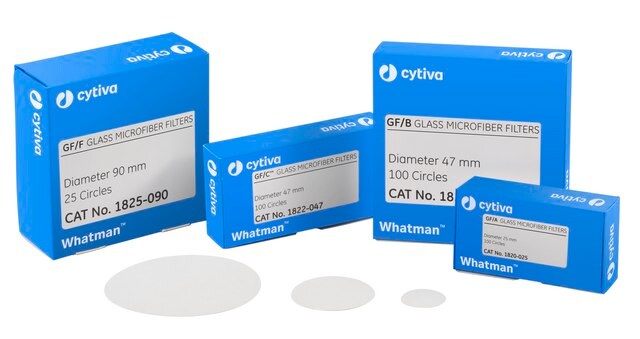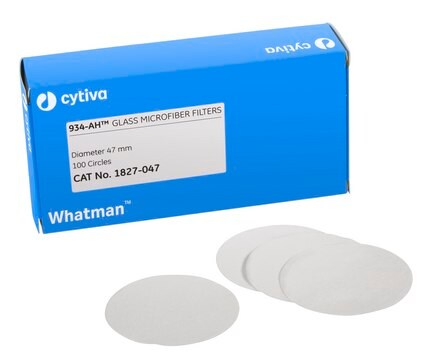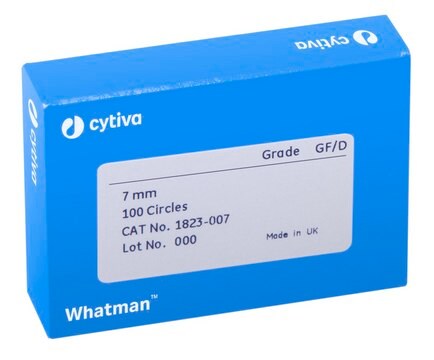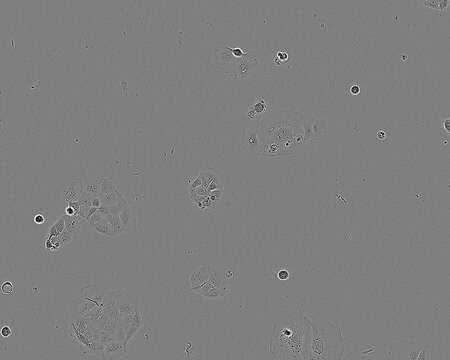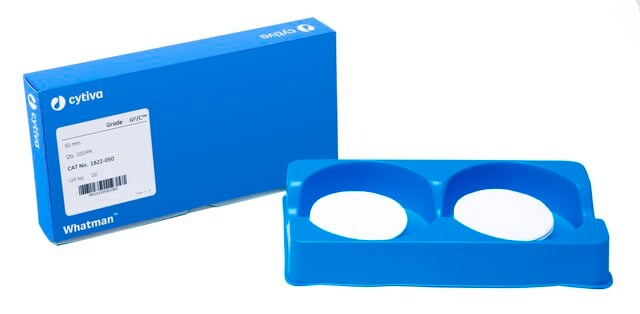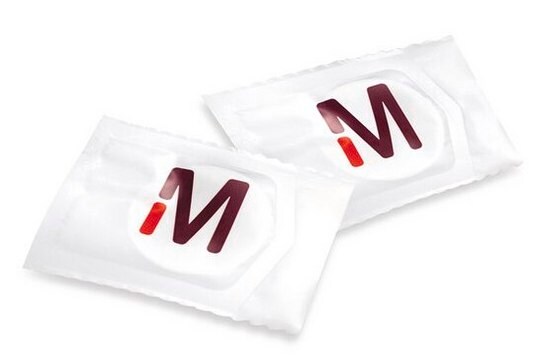MG-63 Cell Line human
86051601, human bone, Fibroblast
Sinónimos:
MG63 Cells
Iniciar sesiónpara Ver la Fijación de precios por contrato y de la organización
About This Item
Código UNSPSC:
41106514
Productos recomendados
product name
MG-63 Cell Line human, 86051601
origen biológico
human bone
descripción
Human osteosarcoma
modo de crecimiento
Adherent
cariotipo
Modal no. 66; hypotriploid
morfología
Fibroblast
productos
Inducible interferon
receptores
Not specified
técnicas
cell culture | mammalian: suitable
enfermedades relevantes
cancer
Condiciones de envío
dry ice
temp. de almacenamiento
−196°C
Origen línea celular
Human osteosarcoma
Descripción línea celular
From an osteosarcoma of a 14 year old male. Produces high yields of interferon following superinduction with polyinosinic acid-polycytidilic acid, cyclohexamide and actinomycin. Antigenically, MG-63 interferon is more closely related to human fibroblast than to leukocyte interferon.
Aplicación
Human MG-63 cell line has been used:
- to investigate the cytotoxicity of acrylic bone cement extracts on MG-63 cells
- to fabricate three-dimensional (3-D) niches and study the cell viability, adhesion and proliferation of MG-63 cells
- as a positive control for immunostaining procedure
- to study the interactions and effects of lysophosphatidate functionalized titanium on MG-63 cells
Interferon-induction studies
Perfil del ADN
STR-PCR Data: Amelogenin: X,Y
CSF1PO: 10,12
D13S317: 11
D16S539: 11
D5S818: 11,12
D7S820: 10
THO1: 9.3
TPOX: 8,11
vWA: 16,19
CSF1PO: 10,12
D13S317: 11
D16S539: 11
D5S818: 11,12
D7S820: 10
THO1: 9.3
TPOX: 8,11
vWA: 16,19
Medio de cultivo
EMEM (EBSS) + 2mM Glutamine + 1% Non Essential Amino Acids (NEAA) + 10% Foetal Bovine Serum (FBS).
Rutina de subcultivo
Split sub-confluent cultures (70-80%) 1:3 to 1:6 i.e. seeding at 2-4x10,000 cells/cm2 using 0.25% trypsin or trypsin/EDTA; 5% CO2; 37°C.
Otras notas
Additional freight & handling charges may be applicable for Asia-Pacific shipments. Please check with your local Customer Service representative for more information.
Producto relacionado
Referencia del producto
Descripción
Precios
Certificados de análisis (COA)
Busque Certificados de análisis (COA) introduciendo el número de lote del producto. Los números de lote se encuentran en la etiqueta del producto después de las palabras «Lot» o «Batch»
¿Ya tiene este producto?
Encuentre la documentación para los productos que ha comprado recientemente en la Biblioteca de documentos.
Nuestro equipo de científicos tiene experiencia en todas las áreas de investigación: Ciencias de la vida, Ciencia de los materiales, Síntesis química, Cromatografía, Analítica y muchas otras.
Póngase en contacto con el Servicio técnico